Groundwater
Steven Dutch, Professor Emeritus, Natural and Applied Sciences, University of Wisconsin - Green Bay
The Hydrologic Cycle

Aquifers
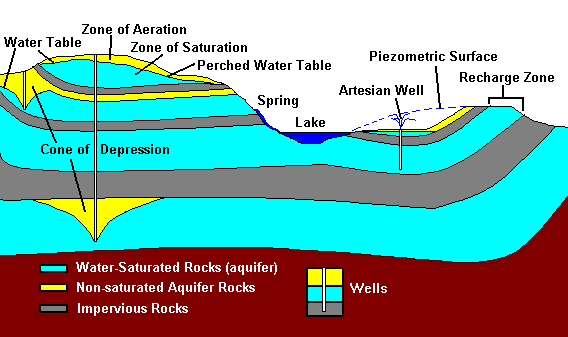
Green Bay Case Study
Deep Aquifers of the Green Bay Area
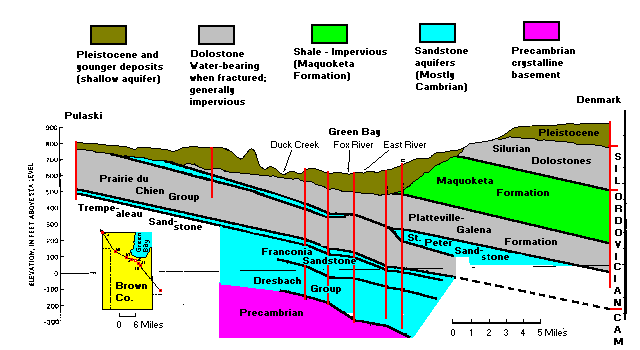
Green Bay Groundwater Pumping 1880-1960
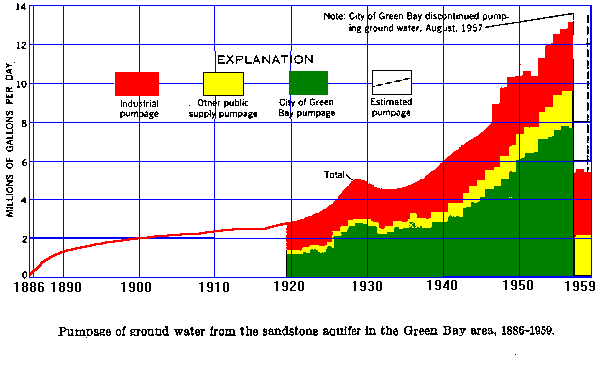
Green Bay Water Table 1880-1960
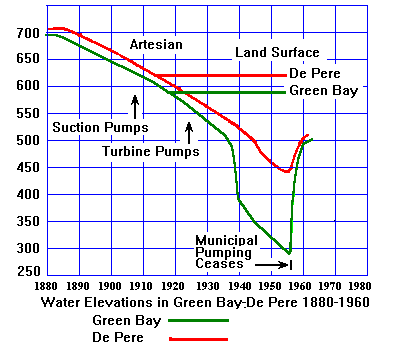 |
The recharge zone for the deep Cambrian sandstone aquifers is near the Wolf River, at an elevation more than 50 m above Green Bay. Thus, the deep aquifers were originally artesian, and the piezometric surface was up to 25 m above ground level. By about 1910, the groundwater had been depleted so much that the piezometric surface was near ground level and suction pumps had to be installed. Suction pumps will lift water only about 10 m, the height of a water column that equals atmospheric pressure. |
By the 1920's the piezometric surface had fallen an additional 10 m and turbine pumps had to be installed. The piezometric surface continued to plummet until 1957, when Green Bay ceased municipal pumping and began drawing water from Lake Michigan. The piezometric surface recovered rapidly.
Green Bay Piezometric Surface
 |
 |
| The piezometric surface just as pumping ceased. A classic cone of depression. | The piezometric surface a couple of years after pumping ceased. Note the dramatic but not complete recovery, since there is still a good deal of private pumping and municipal pumping outside Green Bay. |
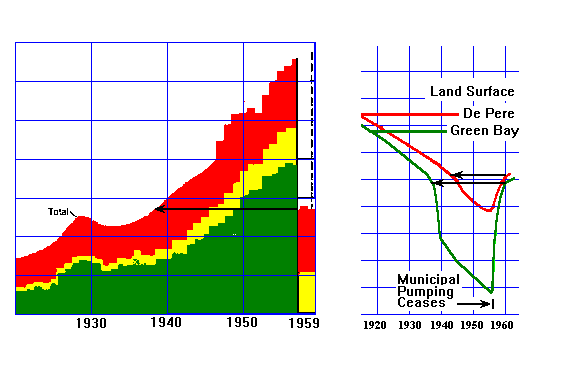
A comparison of water use and piezometric surface 1920-1960. Note that when the city of Green Bay stopped pumping, water use dropped to levels of about 20 years earlier, and the piezometric surface rose to levels of about 20 years earlier.
The Russian Radioactive Waste Injection Program
Graphics based on illustrations in The New York Times.

The Russians dispose of radioactive waste by injecting it deep underground. One major disposal area is near the city of Tomsk in central Siberia. The problem is that the waste is spreading. The nearby Tom River flows to the Ob, one of the major rivers draining to the Arctic Ocean. (The city is named after the river. Tomsk is an adjective meaning "on the Tom.")

The waste is injected into porous sandstones beneath impervious clay layers. The geology seems pretty well suited to this sort of system but the waste is spreading faster than expected. It is entirely possible the waste will never escape, or escape after such a long time that most of the radioactivity has died away. However, if it does escape, the results could be bad.
Return to Overheads Index
Return to Professor Dutch's home page
Created February 3, 1997, Last Update 23 September 1999
Not an Official UW-Green Bay Site